Plant Evolution in Our Backyards
Plants are masterful problem-solvers because they must adjust to their environment in place. Unlike animals, they can’t simply move to a new location if they are hot, thirsty or under threat from predation. As a result, plants have evolved fascinating physical and chemical defenses that help them survive an array of stressors from which they cannot escape.
Chemical defenses against insect herbivory are extremely important to plant survival. Insect herbivory damages leaves, hobbling a plant’s ability to photosynthesize and leading to poor seed set, which lowers plant fitness (reproductive success in a given environment). Herbivores can therefore exert strong selection pressure on plants and have spurred a dazzling evolutionary radiation of chemical compounds to problem solve against a menagerie of chewing, rasping and sucking critters.
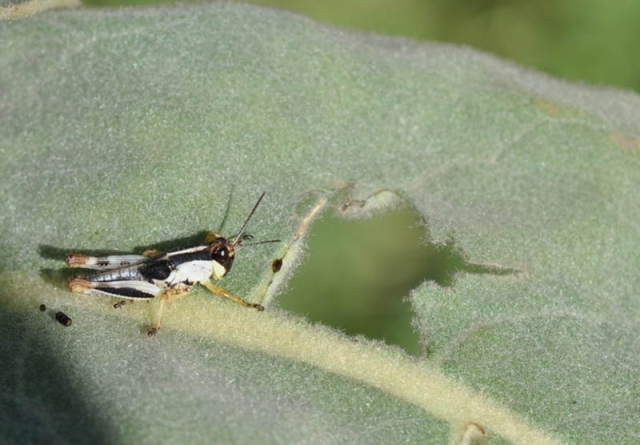
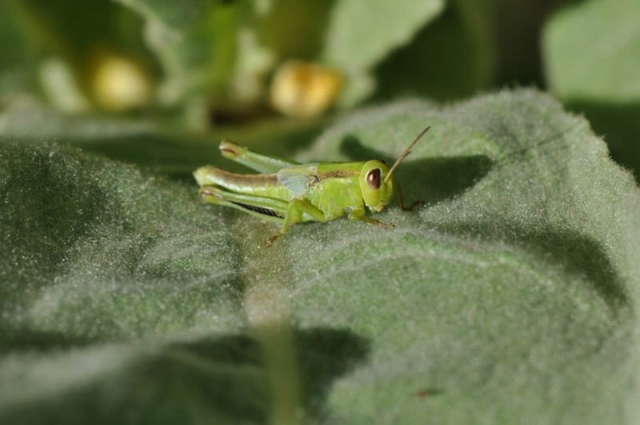
Generalist grasshoppers feeding on Verbascum thapsus (common mullein) growing in its introduced range (Montana). Photo: Chrissy Alba
Different plant families often harbor specific suites of herbivore-deterrent compounds. For example, one of our locally common members of the Scrophulariaceae, Verbascum thapsus (common mullein), defends itself against herbivores using iridoid glycosides. Common mullein was introduced to North America in the early 1600s by western European settlers who valued it for its medicinal qualities. This situation leads to an interesting question: If herbivores shape the evolution and expression of defensive chemicals, and introduction to a new range vastly shifts the herbivore community, can plants evolve their defenses to better match their new environment?
Research has revealed the answer to be yes! The large and diverse herbivore community that fed on mullein in its native range was reduced to a few types of herbivores in its introduced range. Importantly, mostly grasshoppers, which are generalist (wide host range) chewing herbivores, feed on mullein in North America. In Europe, not only generalists, but also a plethora of specialists, which feed specifically on Verbascum or closely related iridoid-containing plants, feed on mullein. Now here’s the twist: the same chemicals that deter generalists like grasshoppers, actually attract a range of co-evolved specialists, like weevils and moth caterpillars, as cues for feeding and egg-laying. This situation is called an “evolutionary dilemma.” What’s a plant to do when defense against one type of herbivore attracts another?
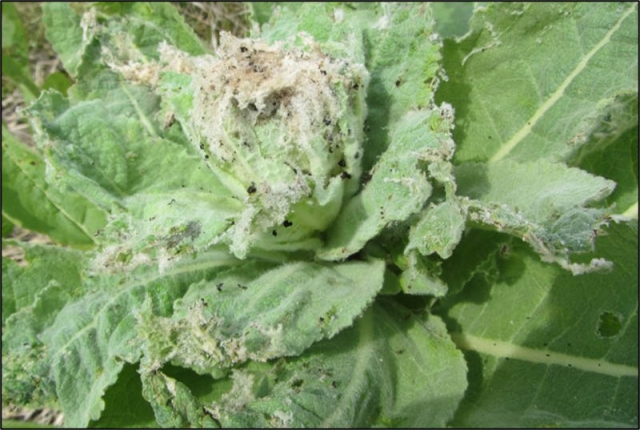
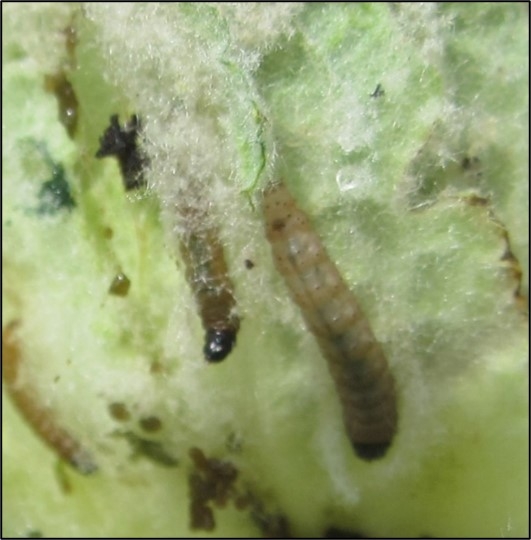
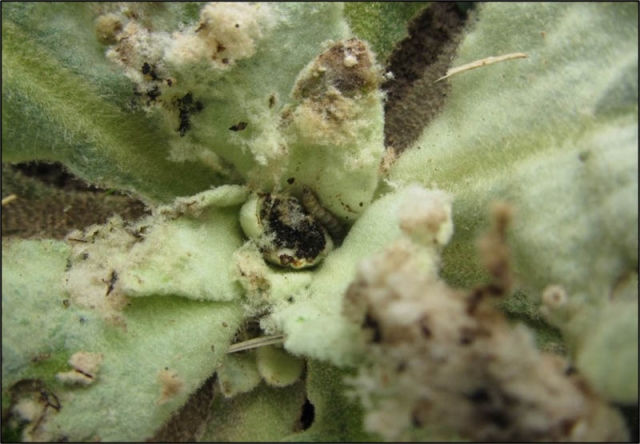
Specialist Nothris verbascella (clay groundling moth) caterpillars causing severe damage to young leaves of Verbascum thapsus in its native range (Prague, Czech Republic). Photo: Chrissy Alba
By quantifying plant defense profiles of common mullein plants from both the native and introduced ranges, several colleagues and I (over years, with lots of fieldwork and experiments!) found that introduced mullein plants have evolved since being introduced to North America, exhibiting higher levels of chemical defense against generalist herbivores (those pesky grasshoppers!) than their native counterparts. Introduced mullein was freed from the evolutionary dilemma of deploying iridoid glycosides at some evolutionarily tuned “sweet spot” that could defend against generalists while not being overly attractive to specialists.
If you thought that our evolutionary story ended there, keep your seatbelts on! Investing in defense is not free – it costs plants in energy and resources. So, one last trick of genius is that the ramped-up levels of defense found in introduced mullein is concentrated in the plants’ young leaves. Young leaves are more valuable to defend because they are generally higher in nitrogen, more highly photosynthetic, and hold more water than older leaves. Losing them to herbivores is therefore costly. This is an optimal deployment of defense because the overall amount of defense is similar at the whole-plant scale, it’s just more optimally distributed among different plant tissues. And there you have it: right in your backyard, mullein has evolved within a few hundred years to better match its new herbivore environment. Problem-solving at its finest.
Add new comment